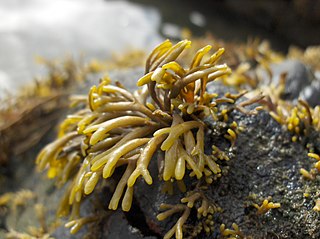
Pelvetia canaliculata, the channelled wrack, is a very common brown alga (Phaeophyceae) found on the rocks of the upper shores of Europe. It is the only species remaining in the monotypic genus Pelvetia. In 1999, the other members of this genus were reclassified as Silvetia due to differences of oogonium structure and of nucleic acid sequences of the rDNA.

Ceramium is a genus of Ceramium algae. It is a large genus with at least 15 species in the British Isles.
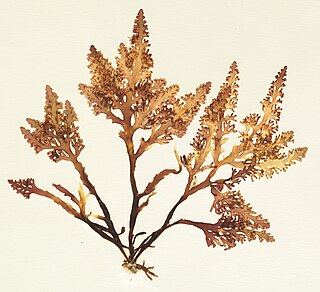
Osmundea pinnatifida is a species of red alga known by the common name pepper dulse.

Fucus distichus or rockweed is a species of brown alga in the family Fucaceae to be found in the intertidal zones of rocky seashores in the Northern Hemisphere, mostly in rock pools.

Dumontia contorta is a relatively small epiphytic algae of the sea-shore.
Polysiphonia denudata is a small red alga, Rhodophyta, growing as tufts up to 20 cm long without a main branch axis.
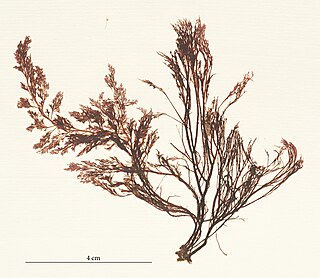
Polysiphonia elongata is a small red marine algae in the Rhodophyta.

Melanothamnus harveyi, Harvey's siphon weed, is a small marine red alga in the division of Rhodophyta.
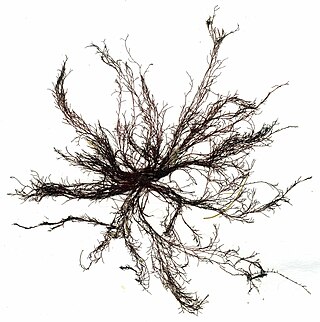
Polysiphonia stricta is a small red marine alga in the Division Rhodophyta.
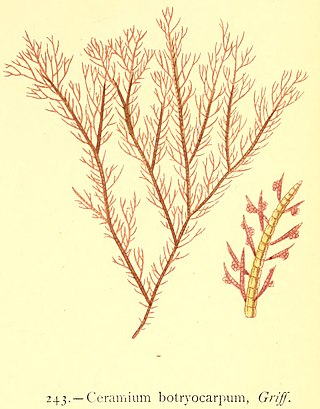
Ceramium botryocarpum is a small red marine alga in the Division Rhodophyta.

Ceramium shuttleworthianum is a small marine red alga.
The taxon Ceramium siliquosum is a small marine alga. It belongs to the red algae genus Ceramium.
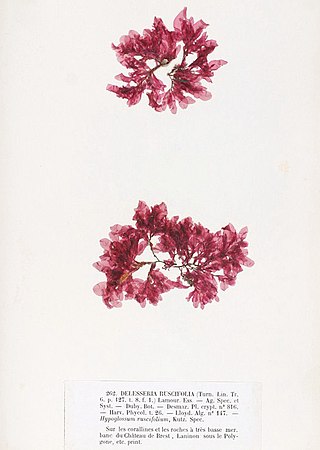
Apoglossum ruscifolium is a small red marine seaweed.

Hypoglossum hypoglossoides, known as under tongue weed, is a small red marine alga in the family Delesseriaceae.

Delesseria sanguinea is a red marine seaweed.

Phycodrys rubens is a red marine alga of up to 30 cm long.

Phyllophora crispa is a medium-sized fleshy, marine red alga. This alga forms dense mats of up to 15 cm thickness, which influence environmental factors, thus creating habitat for several associated organisms.
Phyllophora sicula, the hand leaf bearer, is a small red marine alga.

Odonthalia dentata is a medium-sized marine red alga.
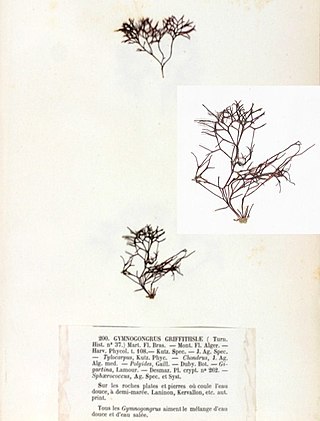
Gymnogongrus griffithsiae is a small uncommon seaweed.


















